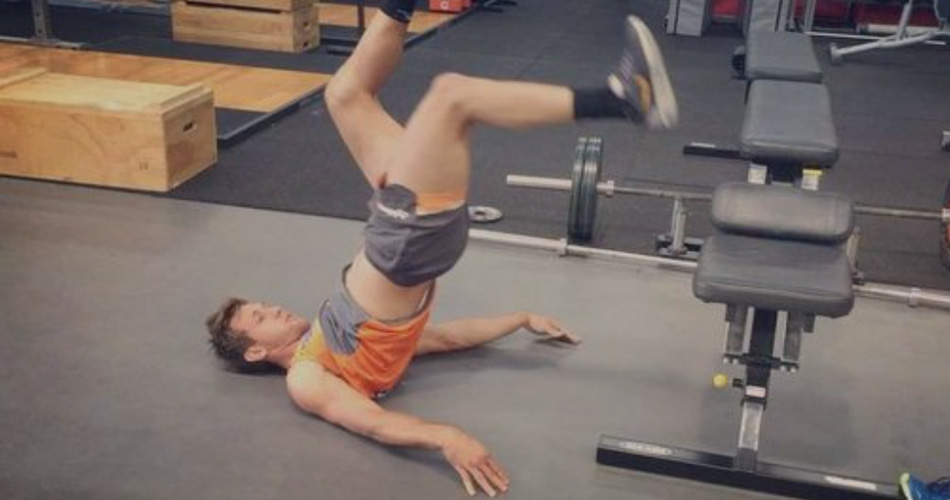Hamstring Functioning During Running (Part 1): Eccentric or Isometric?
Avoiding the downside takes more important role that pursuing the upside in elite teams and athletes. In plain english, avoiding the downside means avoiding injuries and other training and non-training related setbacks. One of those injuries is the hamstring injury. Hamstring injury very often leaves coaches and athletes puzzled why it happened and even more how to reduce the likelihood of reinjury and injury in the first place.
There have been hot debates on preventing (or reducing likelihood) of hamstring injury, from susceptible factors, training load management to the best exercises that one needs to per-form on top of sound strength and speed program. One such debate is between proponents of eccentric training (Tony Shield and Simon Murphy)and proponents of isometric training (Bas Van Hooren and Frans Bosch).
I see this particular debate as via Negativa and via Positiva complementary aspect. In this case via Positiva is making sure hamstring muscle is robust enough and can take “eccentric penalty”. To achieve this goal, we need to make hamstring eccentrically strong so it can withstand the eccentric stress.
On the other hand, via Negativa, according to Bas Van Hooren and Frans Bosch theory that hamstring muscle contract isometrically during sprinting (also see my article on Function of Muscle in the Human Body), means improving pelvic control and isometric function to minimize eccentric penalty during sprinting. As a practitioner, I would choose to do both ap-proaches, since I am complementarist and I believe in avoiding dogmatic approaches and putting all my eggs in one basket (in this case camp).
But this debate is highly welcomed. For this reason, I am happy to present you two part guest article from Bas Van Hooren outlining their side of story and practical applications. Enjoy!
Introduction
Hamstring injuries are one of the most common and severe injuries in sports that involve high-speed running such as soccer (Bahr, Clarsen, & Ekstrand, 2017). As a result, there is great interest in the prevention and rehabilitation of hamstring injuries.
It has long been believed that there is an eccentric hamstring action during the swing phase of running and eccentric exercises have therefore been implemented to replicate this hamstring functioning and specifically condition the muscles. Together with Frans Bosch I have recently argued that there may be no eccentric, but a predominantly isometric hamstring action during the swing phase of running (Van Hooren & Bosch, 2017a). As a result, isometric exercises may more specifically replicate hamstring functioning during running than eccentric exercises, which makes them potentially highly effective for injury prevention and performance enhancement (Van Hooren & Bosch, 2017b).
Hamstring functioning during running
Several modelling studies have investigated the changes in knee and hip joint angle during running and related this to the muscle-tendon unit length of the hamstrings (for references, see Van Hooren & Bosch, 2017a). These studies found that the muscle-tendon unit length of the hamstrings increases during the swing phase (Figure 1). Since the hamstrings are also highly activated during this period, these studies concluded that there is an eccentric hamstring action during the swing phase of running. However, it is well known that muscle-tendon unit behavior does not necessarily reflect muscle fascicle behavior. During the downward phase of a drop jump, the fascicles of the gastrocnemius for example remain isometric or even shorten, while the muscle-tendon unit increases in length (for references, see Van Hooren & Bosch, 2017a). A similar behavior could be present for the hamstrings during the swing phase of running. Therefore, concluding that there is an eccentric hamstring fascicle action based on measures of muscle-tendon unit length can lead to incorrect conclusions.
Direct measures of fascicle length are required to know whether there is indeed an eccentric or isometric hamstring fascicle action during running. Unfortunately, until today it has not been possible to directly measure hamstring fascicle behavior during running with ultrasound as done in other human muscles due to the rotation of the hamstring during running. Inferences on hamstring fascicle behavior therefore need to be made from 1) animal studies where it is possible to directly investigate fascicle lengths using an invasive technique called sonomicrometry (ultrasound crystals implanted at the ends of the muscle fascicle) or 2) modelling studies in humans.











Responses